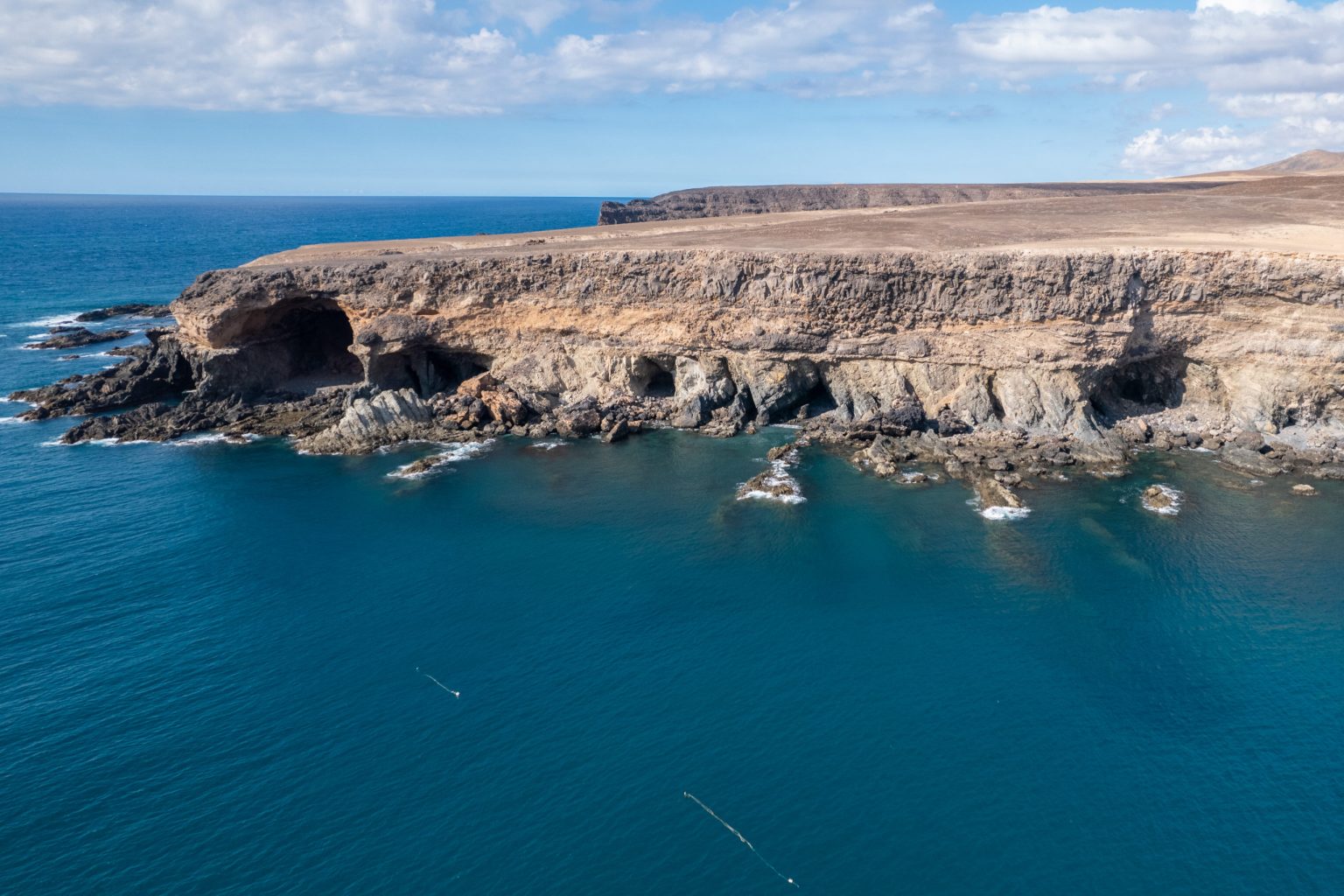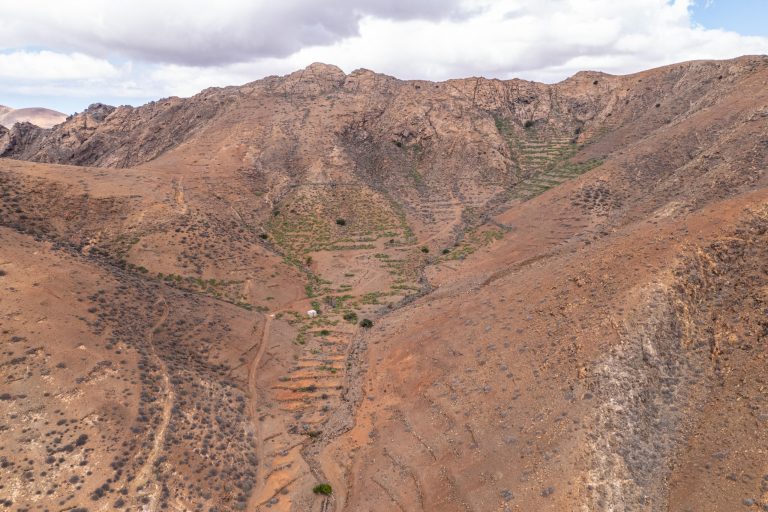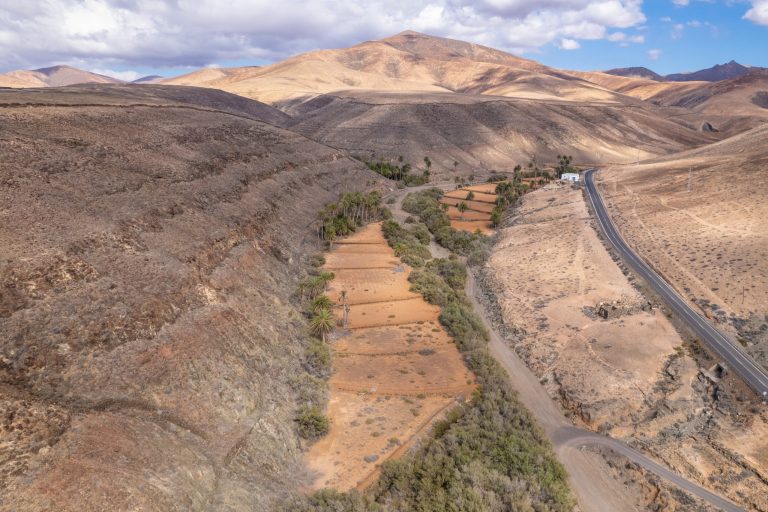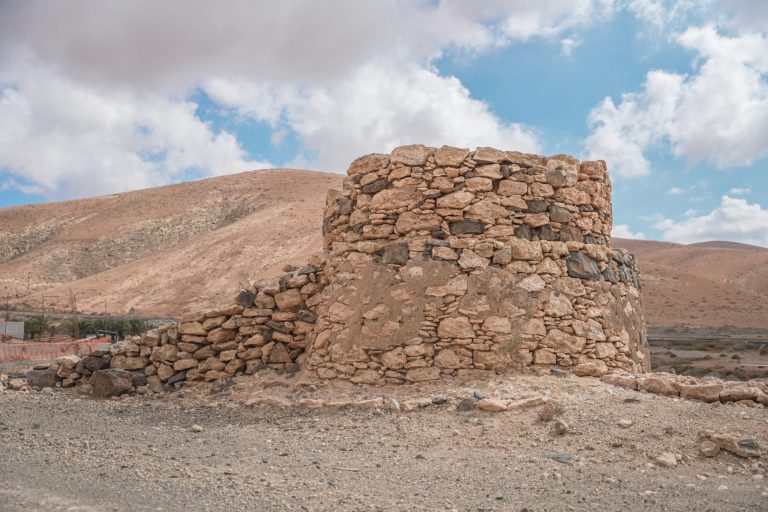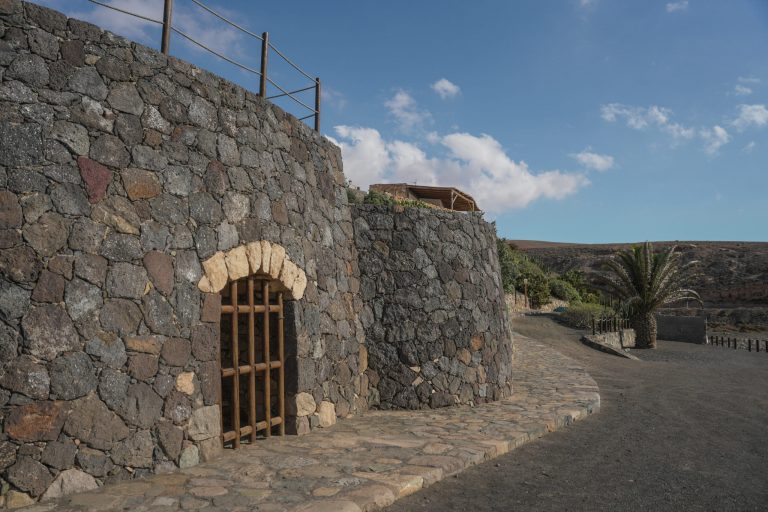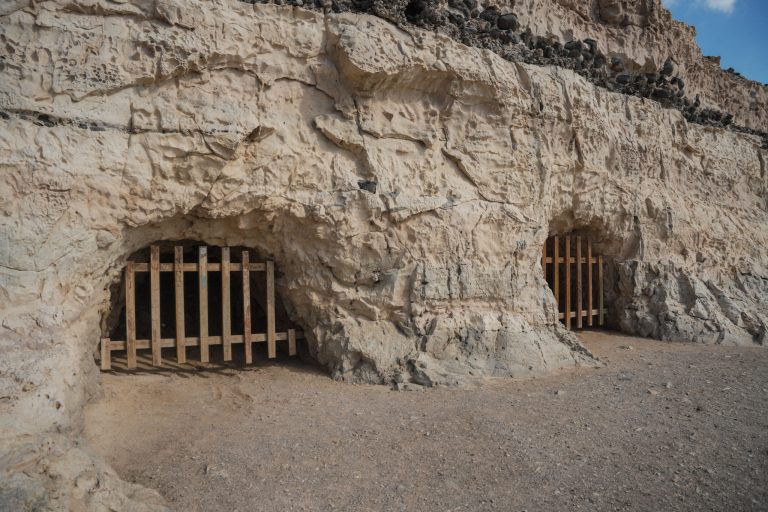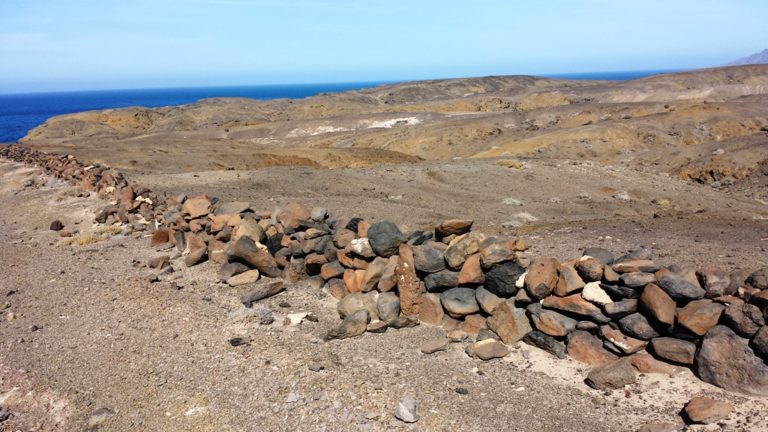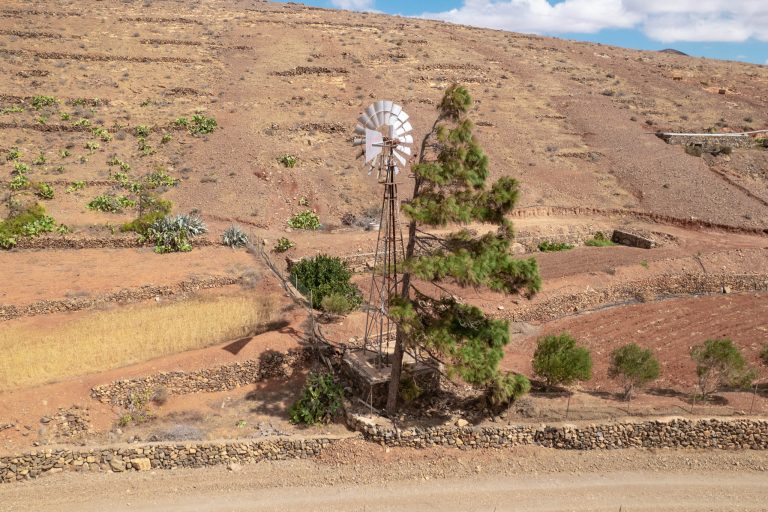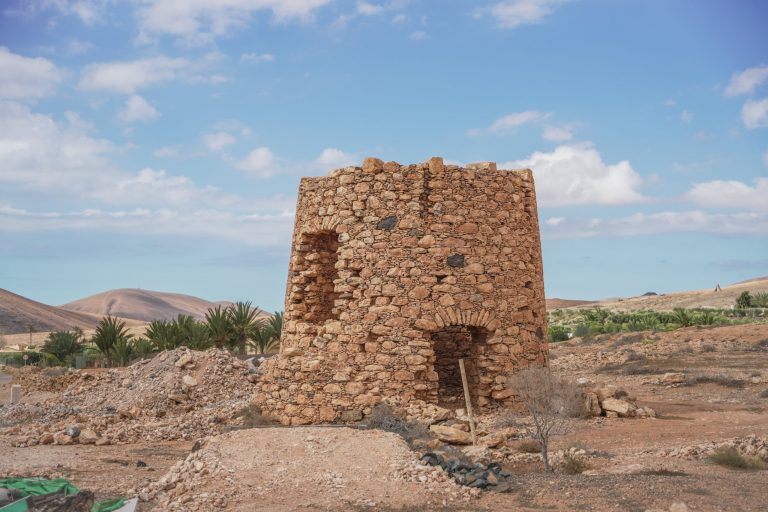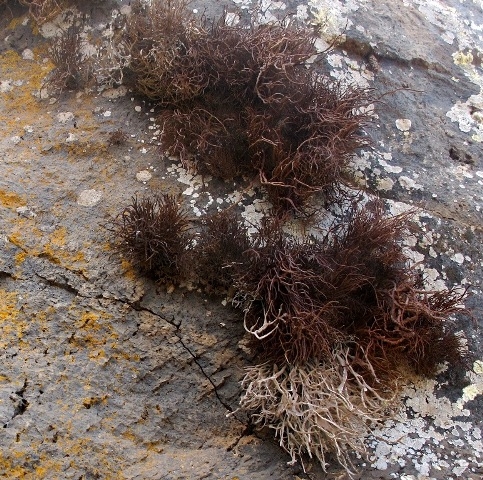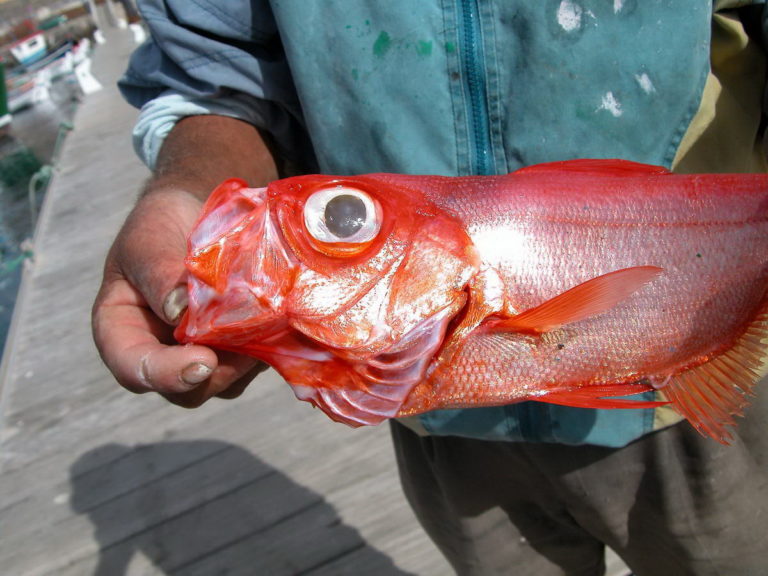Natural Monument since 1994
The Ajuy cliffs were declared a Natural Monument in 1994, as part of the Betancuria Rural Park . The space stands out for its geological, paleontological and ethnographic interest, as well as for the beauty of its rugged landscape.
Apparently we are on another beach, in a small fishing village nestled between cliffs. What makes Ajuy different from other places? Basically its stones. Because these strangely shaped walls facing the western Atlantic are a true open-air classroom for those interested in studying the birth of the Canary Islands.
We start the path from the free parking next to the sea , well signposted from the moment we reach the town, in the direction of “Cuevas de Ajuy”. To the side you can see two restored lime ovens. From here we walk along the black sand beach towards the cliff, where the path climbs.
On this right bank of the mouth of the ravine , a stone wall rises vertically, the rock of which is heavily banded with light and dark stripes. They are ocean floor sediments formed at the time of the dinosaurs about 170 million years ago, the oldest materials in the Canary Islands. They form part of the basal complex on which the islands are based, visible in few places in the Archipelago.
A gate gives way to the ascending path . Halfway up this ramp a different white rock appears. They are fossil dunes from the Pliocene (Calcarenites) formed by fossil remains of shells, shells and algae. Solidified sea sand that due to erosion gives rise to very curious formations. Among them there are layers of alluvium, rock fragments transported down the ravine by the effect of torrential rainwater in geological times. And further on, above them, sits the sands of a beach raised more than 14 meters above current sea level, rich in fossils with an approximate age of 5 million years.
From there, the perfectly signposted path takes us to the lime kilns, the jetty, the syenite stone quarry and the large caves of Caleta la Negra.
On the way back, it is possible to climb the ravine to reach the mouth of a tunnel , never completed, which was intended to connect the town with the caves to facilitate the transport of the material to the ships.
Recommendations and Warnings
It is very dangerous to get too close to the edge of the cliff. You also have to pay close attention if you go down to the caves, as the stairs can be wet due to their proximity to the sea and cause serious slips.

